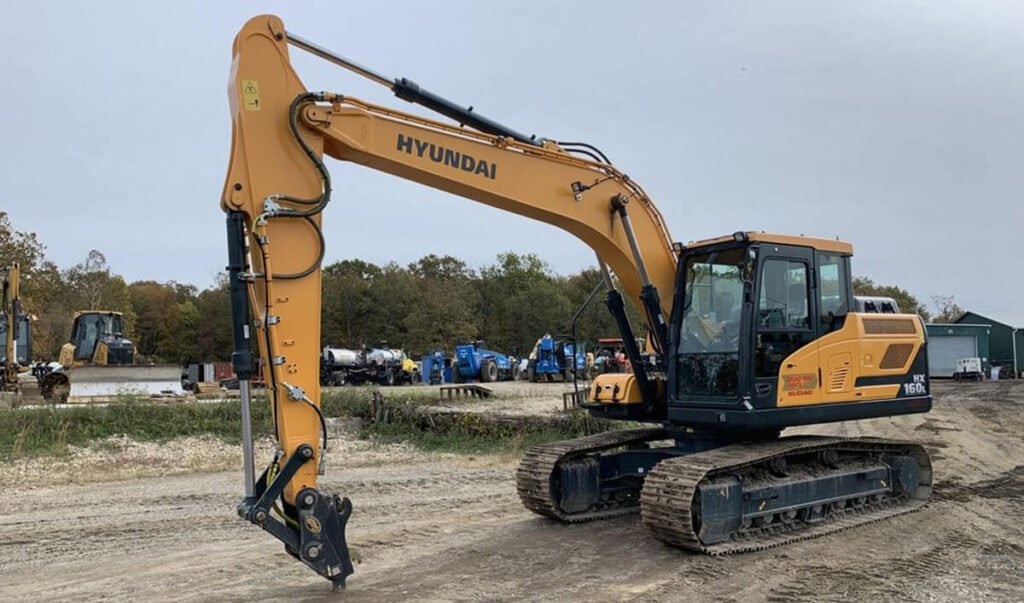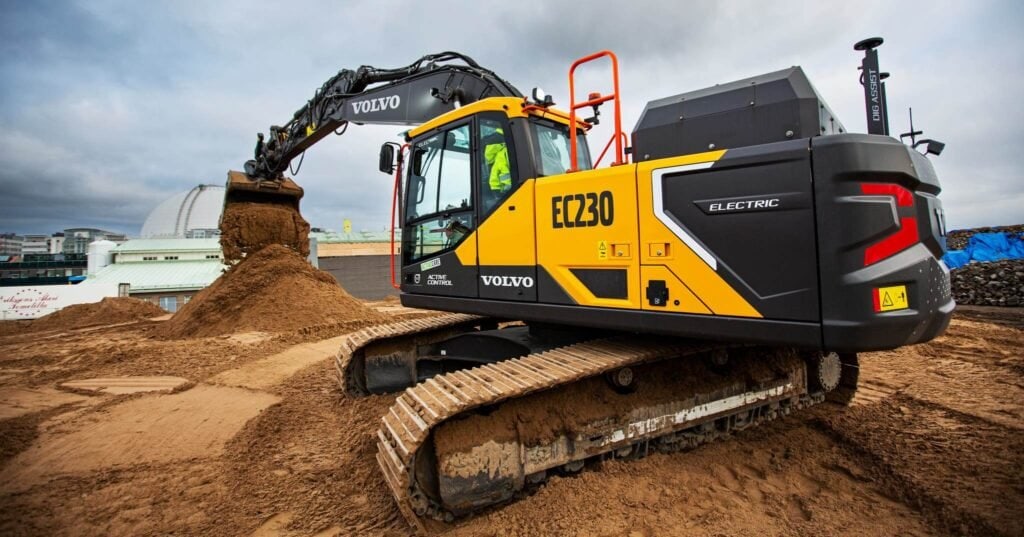Buying an excavator is easy. Maximizing its capabilities is hard. Ignoring it or maintaining it poorly reduces efficiency, frustrates your projects, and increases your costs. You must be smart and learn what matters.
Excavatrice performance depends on engine health, hydraulic efficiency, operator skills, attachment match, and proper size selection. Ignoring these areas causes higher fuel costs, slower cycles, and shorter machine lifespan. Paying attention ensures reliability and profit for every job.
Now, let’s take a closer look at the most important elements that affect your excavator from purchase to everyday use.

How Does Engine Condition Influence Excavator Performance?
The engine is the heart of every excavator. If the engine isn’t burning fuel consistently and providing power properly, the machine won’t maintain a constant digging strength or load-carrying capacity. When newbies look for an excavator for sale, they often look based on price. They fail to consider that the condition of the engine will directly impact the overall capacity of the excavator per day.
A strong engine means consistent work. A Cat excavator or Komatsu excavator, for example, is designed to last for thousands of hours. However, a premium brand, like those just mentioned, will underperform if it’s not taken care of. A clogged air filter, dirty or diluted fuel, or an overdue oil change can quickly cut the efficiency of an excavator by 20% or more.
Engine performance affects digging power, reliability, and excavator maintenance cost. Regular service, clean fuel, and timely filter changes are crucial.
Buyers from Peru or Africa may be looking for a used excavator from China because they can get a better price on an excavator compared to buying new. However, they need to request inspection reports. A well-maintained Cat 320 excavator for sale can outperform a poorly maintained newer machine. For someone looking at mid-size machines like the 13-tonne excavator or Cat 315 for sale, it provides extra peace of mind if you can verify the engine reports
Exporters also advise getting oil analysis reports to look at internal wear. You can have an excavator or track hoe with low hours, but if the engine was mistreated, then you’re out of luck. Bottom line, the engine is a non-negotiable when it comes to long-term performance.

Why Are Hydraulic Systems So Critical?
The hydraulics are the muscles, driving the boom, the arm, and the bucket. Strong hydraulics create smooth and quick cycles. Weak hydraulics mean even the lightest loads are a struggle. The hydraulic system controls your cycle times, your lifting capacity and makes everything happen. Poor fluid, leaks, or worn-out pumps significantly reduce the performance of your excavator and increase your downtime.
Regular inspection of hydraulic pumps, oil viscosity, and hoses is essential. An SANY excavator or Liebherr excavator will work well in the hot sun, but only if the oil cooling and filtration are maintained. Most people compare the excavator vs backhoe and go with the excavator due to the superior hydraulic reach and versatility.
A well-serviced Cat 308 excavator or Pelle Cat 330 for sale continues to have strong demand, especially if the hydraulics records are in the clear. If the hydraulics are bad, then even a low-hour mini excavator for sale is not very attractive. If you are in a place like mining or a rocky environment, then considering models such as Cat 390 long reach or Cat 390f specs makes sense because of the built-in hydraulic strength for extreme loads.
Chinese companies also offer a wide range of excavator sizes, from micro excavator size machines to excavator 13 ton mid-range units. Be sure to ask about fluid replacement intervals and system pressures before you buy. A good hydraulic system not only increases efficiency, but it also reduces your overall cost of ownership of the excavator.

Do Operator Skills Really Matter?
Even the best excavators in the world with the best hydraulic systems will underperform if the operator doesn’t know what they’re doing. Operator behavior not only impacts project outcomes, but it also affects the long-term health of the machine. Operator habits determine everything from fuel use to wear and tear to productivity. Skilled operators know how to maximize efficiency by using the right digging angles, throttle control, and by performing their daily checks.
In developing countries, it’s filled with a lot of excavator operator jobs filled by people who don’t know what they’re doing. These people you hire throw away fuel; they wear out the machines. These people can easily make a Volvo excavator or Hitachi mini pelle consume an extra 10 or 15 percent just because they don’t know how to operate it. When you’re selling a used excavator, wouldn’t it be great if you could give the buyer a few simple excavator operating tips to save on fuel?
People often ask, “Hey, you talk about excavator explained in simple terms. What is an excavator?” It’s a construction digger. It uses hydraulics to dig, lift, move soil. But it’s how you do that which makes the difference. A skilled driver knows how to use the excavator bucket specifications, how to balance a load on the excavator track, and most of all how to achieve better excavator capacity per day.
Often when you buy from China, they have bucket capacity training videos. Whether you’re operating a trackhoe/track hoe, a small bobcat e35 excavator or even a larger cat 323f price model, knowing how to use it will make your projects go smoother. Your mini excavator rental cost won’t go out of control when you outsource work to a company that operates the equipment properly. Also, skilled operation will protect the resale value of the equipment. That means even your used excavator could be a good investment.

How Important Are Attachments And Machine Match?
Attachments expand possibilities, but you need to match the capacity of the attachment to the capacity of your machine. You can put too big of a breaker on a cat 320f price model and start blowing hydraulic pumps because the machine can’t handle the pressure. When you match the attachment’s capacity to the machine’s capacity, you increase the system’s efficiency. Buckets, breakers, augers, and grapples all need to match the size and hydraulic flow capabilities of the machine.
Before you purchase a machine, look at the Case excavator sizes chart or the Case excavator size guide. Using the wrong attachment on a cat excavator sale deal will diminish resale value. A well-matched dragline excavator or railroad excavator will give you years of reliable service.
A small job might call for a micro excavator or a Mini-pelle Kubota. A larger demolition job might require a Cat 390 long reach. When people are searching for the “smallest mini digger” or temu mini excavator, they are usually looking for something inexpensive. When you are looking at exporting, you need to make sure you match it properly.
Whether it’s a mecalac excavator, a cat 308d for sale, or a cat 330 excavator for sale, as the buyer, you’re going to want to test the hydraulic flow against the attachment requirements because that’s where you’re going to get the most bang for your buck. Well-chosen attachments will give you the ability to do more, do it faster, have less downtime, and make more money. In this case, it’s better to buy a package with the correct attachments than it is to buy the right equipment with the wrong attachments.

What Is The Perfect Size Excavator?
It’s a balance between cost and efficiency. The right size depends on the job you are going to do. Small ones for small sites, 13–25 tons for medium, and 30+ tonnes for where the heavy jobs are going to happen.
A micro excavator size fits great in landscaping. An excavator 13 ton would be great for general construction. If you are a buyer in Peru, 13 13-tonne excavator like the Cat 315 for sale gives you tons of options for what you can do. If you are doing some massive stuff, the Cat 390 long reach or Cat 323f price would be the way to go.
If you were in the rental market, you would find that the mini excavator rental cost would be very attractive for short-term projects. As an exporter, you see people recommending medium machines like the Pelle Cat 320 for sale or a Cat 308d for sale because they give you a good blend of fuel use versus what you are capable of doing.
Using an excavator size guide or comparing case excavator sizes helps buyers avoid underpowered or oversized purchases. A temu excavator or Chinese excavator might be cheaper, but understanding excavator price differences per size class ensures better decision-making.

What Are The Disadvantages Of Excavators?
While excavators give you a lot of power and a lot of flexibility, there are also some drawbacks. Excavators can be expensive. They can be fuel hogs. They require a skilled operator. They’re expensive to transport. The maintenance on them can also be a bit of a challenge.
The high excavator maintenance cost worries a lot of people. Plus, the big units like the Cat 390f specs are going to consume more fuel than a smaller mini pelle for sale unit wood. In urban areas, noise and transport present limitations too.
Another issue is volatility around price. A cat excavator sale might catch your eye, but you have to look at the cost of the spare parts. A Cat 308 excavator part may cost more than a Sany excavator replacement, even though the Sany excavator price is less.
Also, you have the issue of transport. If you have to move a cat 330 excavator for sale over long distances, you start adding a lot of cost. This is why many people choose to rent one. That’s why you see people searching for excavator rental or mini excavator rental as opposed to buying.
Finally, there’s a high degree of operator dependency. If you don’t have skilled operators, even a premium machine like a Volvo excavator or Komatsu excavator is not going to perform well. You have to weigh the benefits versus these drawbacks.

What Is The Average Lifespan Of An Excavator?
You want it to last as long as possible and garner you the most return on investment. The average life expectancy of an excavator is between 7,000 and 10,000 hours. However, the brand, how it’s been maintained, and where it’s been working make a big difference.
A well-maintained Cat 320 excavator for sale may run for 12,000 hours or more. Machines that are not well-maintained will not last as long. The climate it’s in also a big difference. In hot, dusty climates, the life expectancy is going to be a lot lower.
In Africa or South America, refurbished used excavator units from China will extend the life of the machine. Entire companies are built around fixing up Chinese machines and reselling them to areas where cost is a greater decision driver. You’d see people looking at a cat 323f price or a cat 320f price, or even the big, heavy-duty guy, the cat 390 long reach.
For smaller purchasers, a mini excavator or temu excavator might only last five to seven years. It won’t last as long, but it won’t cost as much to buy initially. Excavator explained: If you take good care of it, it’s going to last a long time. Before you buy it, check the hours, ask for the maintenance logs, and check the track condition.
Overall, it depends on your excavator operating tips, how the brand holds up, and whether it’s a Cat excavator, Komatsu excavator, or Sany excavator.
Résumé
Engine, hydraulics, skill, attachments, size, drawbacks, and lifespan all go into this. You have to balance all these things when you’re buying an excavator to get as many profits out of it as possible and to reduce your risk.